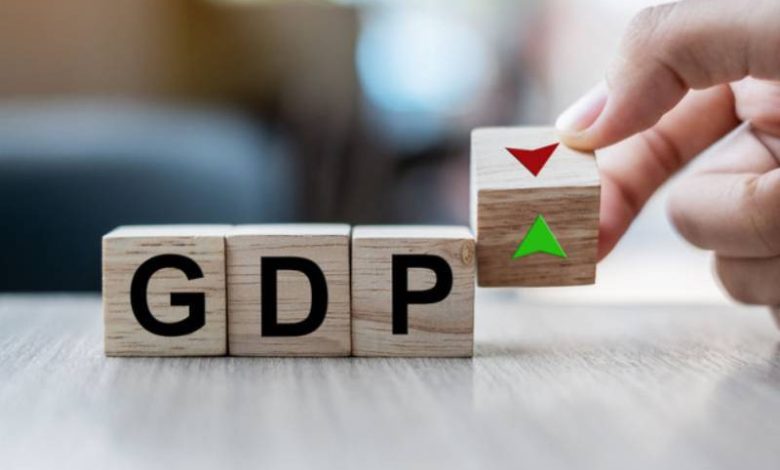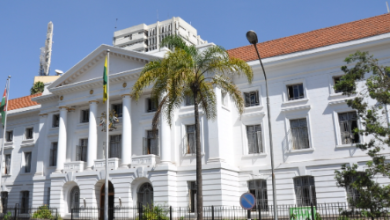Africa’s GDP Growth Drops to 3.1% in 2023 – AfDB

Africa’s GDP growth dropped to 3.1 percent in 2023 from 4.1 percent in 2022, attributed to significant structural challenges and multiple severe shocks, including heightened food and energy prices driven by geopolitical tensions such as Russia’s invasion of Ukraine, climate issues affecting agriculture and energy production, and persistent political instability.
While the growth rate of real GDP decelerated to –1.7 percent in 2020, it rebounded strongly to 4.8 percent in 2021 before slipping to 4.1 percent in 2022, weighed down in part by the effects of Russia’s invasion of Ukraine.Despite these, the African Economic Outlook 2024 is more positive, with growth expected to increase to 3.7 percent in 2024 and 4.3 percent in 2025.This growth rebound will be underpinned by expected improvements in global economic conditions and effective policy measures. With these, Africa will remain the second-fastest growing region globally, with 40 countries set to achieve post higher growth rates relative to 2023 levels.Africa’s structural transformation progress has been slow and uneven, characterized by a slow-paced industrialization and the predominance of a low-skill services sector, mainly because of low manufacturing activity.
Africa’s Economic Transformation ProgressAfrican economies have exhibited remarkable resilience amid multiple shocks, but their structural transformation has been slow and uneven. Real gross domestic product (GDP) is growing but so is the continent’s population. Thus, while real GDP grew on average at 3.8 percent annually over the four decades preceding the COVID-19 period—surpassed only by developing Asia—Africa’s real GDP per capita has been consistently growing at one of the slowest rates in the world since the 1980s.
Moreover, the structure of most African economies has not changed much since the 1990s, such that traditional sectors have continued to drive Africa’s growth and employment.
For instance, the agriculture sector, which employs 42 per cent of Africa’s workforce, is still 60 per cent less productive than the whole economy, leaving most African workers stuck in a low-productivity sector and unable to earn enough to escape poverty.
In effect, Africa has been transforming without a marked level of industrialization but through a low-skill services sector, mainly because of low manufacturing activity.
The expansion in services employment, which contributed to growth-enhancing structural change, has been matched by a sharp decline in the share of employment in agriculture. This transformation has occurred through the reallocation of economic activities from agriculture to other relatively low-productivity sectors, notably personal and retail services, rather than to more productivity-enhancing manufacturing.
But this type of sectoral reallocation has a limited impact on structural transformation. Hence, despite the recent momentum in overall services growth, only 30.1 per cent of Africa’s services exports in 2022 (20.7 per cent in 2005) were in high-skilled services, such as insurance, pensions, finance, and information and communication technology (ICT).
Africa’s Domestic ResourcesAfrica will need to close an annual financing gap of about US$ 402 billion by 2030 to fast-track its structural transformation and catch up with high-performing developing countries from other regions. This financing gap presupposes that the continent prioritizes investment needs in education, energy, productivity, and infrastructure, relating to key Sustainable Development Goals (SDGs) more directly relevant to improving
structural transformation.
Mobilizing additional resources domestically—including by leveraging investment in the continent’s huge endowments in natural resources, especially in critical and rare earth minerals—coupled with enhanced efficiency of public spending, could help bridge a large part of this financing gap.
The role of domestic resources is critical to help African countries finance their structural transformation. In particular, African countries will need to increase their median tax-to-GDP ratio by about 13.2 percentage points—bringing it to 27.2 percent of GDP—to be able to close their financing gap by 2030.
Unfortunately, in many African countries, domestic resources alone will not be sufficient to fill their financing gap for structural transformation. Hence, a reformed global financial architecture can help mobilize more affordable external resources for Africa’s structural transformation needs.
Specific recommendations for multilateral financial institutions to mobilize resources for Africa’s structural transformation at scale include recycling Special Drawing Rights through Multilateral Development Banks (MDBs), implementing the MDB capital adequacy reforms, and reforming credit rating methods.
If implemented, the proposed reforms could secure US$ 169.4 billion a year in development financing, or about 42 per cent of the estimated annual financing gap of US$ 402.2 billion to fast-track Africa’s structural transformation.
See Also:
Kenya to Pump US$ 100Mn into AfDB, Afreximbank and Trade Development Bank



